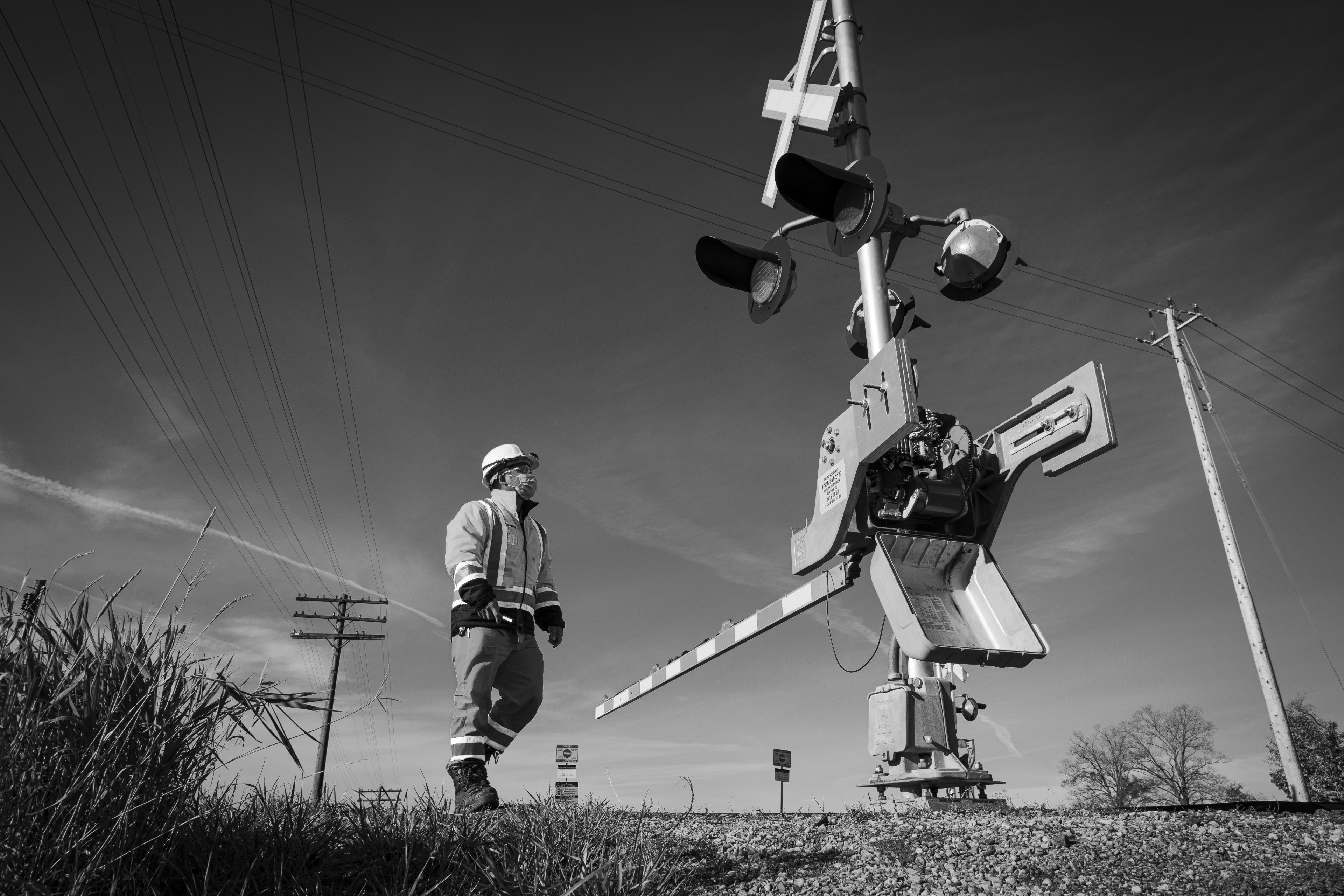Preliminary Design Business Case discusses Kitchener service
Let's take a look at the options to expand GO Transit service on the Kitchener corridor.
Apr 30, 2021
Go west – in an expanded way.
Metrolinx has released a Preliminary Design Business case today (April 30) for expanding and improving Go Transit rail service on the Kitchener line.
Hung Hin, Signal System Specialist inspects a crossing arm at level crossing along the Kitchener line. Hin and his colleagues are responsible for maintaining more than 315 signal assets throughout the Metrolinx/GO Transit network. (Matt Llewellyn photo)
The transit agency is exploring two options on the important rail route. Following the recommendations from the Initial Business Case (IBC) the options to deliver two-way all-day service would all divert from the originally explored expensive rail bypass being built, and instead, through partnership with CN, move forward with an approach that involves sharing tracks and minimal infrastructure.
While a final plan is being developed, Metrolinx is moving ahead with preliminary work to improve service sooner for customers who count on the line that stretches from Toronto to Kitchener, Ont. Under the Preliminary Design Business Case (PDBC) the following options achieved the program benefits and were reviewed:
- Two-way service to Kitchener with existing Silver Junction Crossing – this includes passing track, bridge expansion and platform work on Halton and Guelph Subdivisions.
- Two-way service to Kitchener with grade separation at Silver Junction – this includes rail-rail grade separation, bridge expansion, platform work and passing track.
This is an important development as extending GO rail service west of Bramalea into Kitchener has been a long-standing goal.
The final stopping pattern and timetable is subject to evolve as the project develops. (Metrolinx image)
Staying on Track
This PDBC is the next step in the process following the completion of the Initial Business Case, as Metrolinx uses evidence-based planning to bring more – faster – flexible service to residents each step of the way on the Kitchener corridor.
To obtain more information on the Business Case process, look to Metrolinx’s Business Case Manual. Just click here.
The business case is the second of four business case documents developed over the course of an investment’s lifecycle, guiding the process from options analysis to planning and design and then to delivery and operations. These Business Cases are intended to analyze the potential project, recommend a path forward and track results over the lifecycle of the investment.
The PDBC will analyze the Kitchener Rail Extension through four cases to best understand policy alignment, project benefits, costs, and impacts of the investment and constructability.
To see the report, just click here.
Kitchener Improvements
Since 2018, Metrolinx has rehabilitated and optimized infrastructure to cut down on journey times resulting in an average five minute reduction for comparable trips.
Through its new partnership with CN, Metrolinx was able to implement early service increases on the Kitchener corridor, including the introduction of limited off-peak two-way service to Kitchener in 2019.
What’s Next?
Based on the PDBC, Metrolinx is advancing, and seeking approval for a preferred implementation option. This option will be further refined and advanced to a Full Business Case (FBC) analysis.
In partnership with CN, Metrolinx continues to progress feasibility and design efforts along the corridor. Construction of the Kitchener Expansion program is anticipated to start in early 2021. Additional GO service will be introduced incrementally within construction timeframe, as key enabling works are completed.
In concert with the PDBC Metrolinx will be working with third-parties to integrate transit and community development, Transit Oriented Communities (TOC) will make commuting easier and faster – bringing more jobs and more housing closer to transit. The TOC approach provides real opportunities to build vibrant, higher density, mixed-use communities that are connected to transit stations.
Metrolinx will continue to work with municipalities and development partners to determine where there are opportunities for third party investments to deliver Breslau Station. You can find more on Transit Oriented Communities (TOC) program and process on Metrolinx.com.
As the effort to bring more trains to Kitchener advances, Metrolinx remains focused on bringing better GO services, faster, to customers in the Greater Golden Horseshoe. This announcement is the next stage in driving transit westward.
And again, if you’d like to see the full report on this, click this link.
For more on the Kitchener Line, check out our pages on Metrolinx.com and MetrolinxEngage.com.
by Stacey Kenny Metrolinx corporate communications manager
